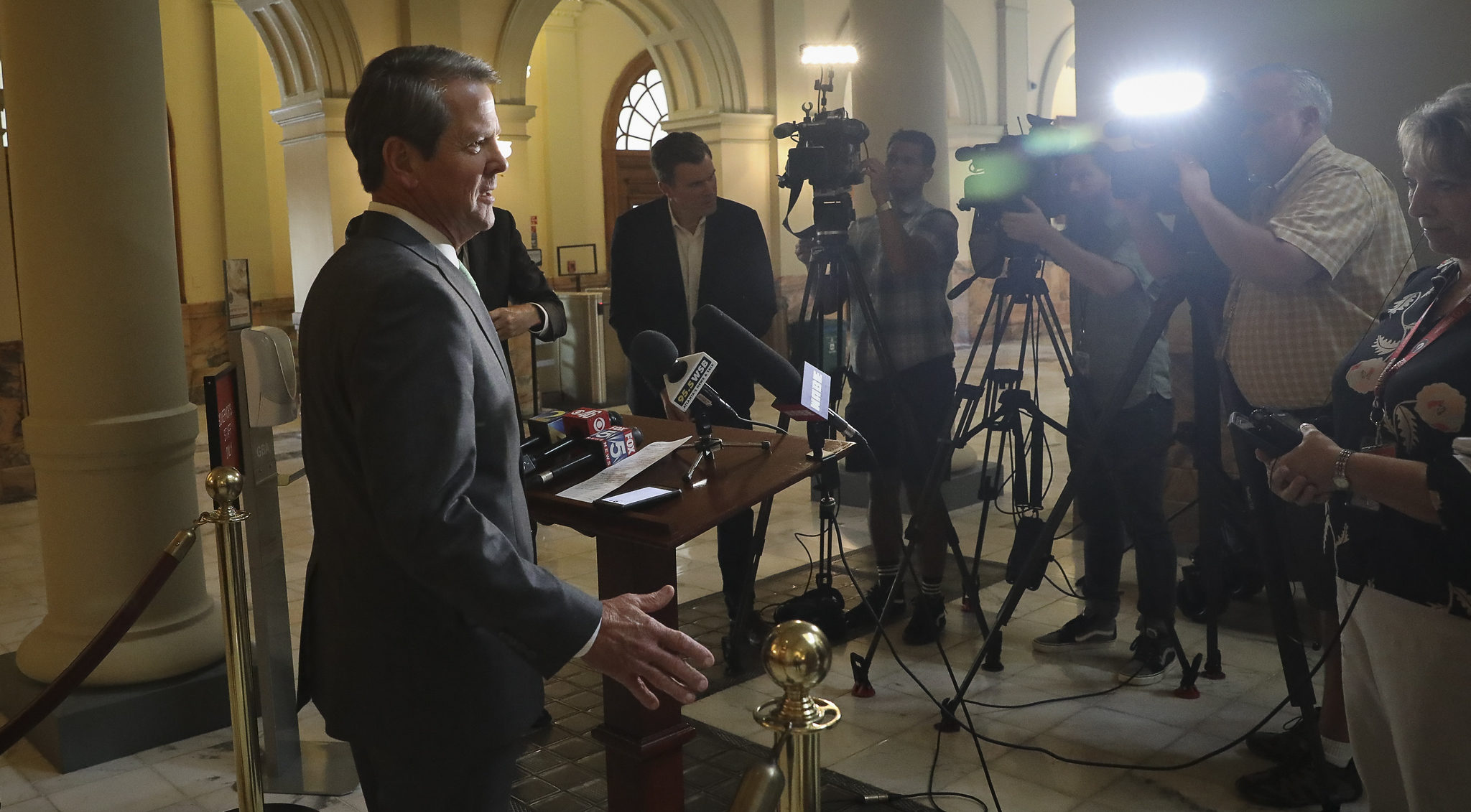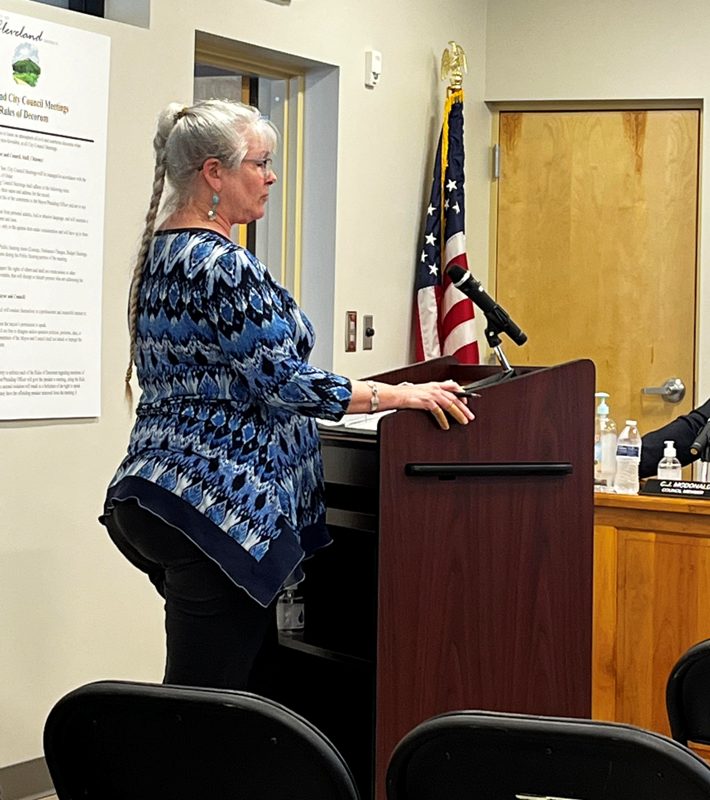ATLANTA (AP) — The Atlanta Braves never seem to get flustered.
Less than two weeks ago, the World Series champions endured a miserable series against the team they’ve been chasing in the NL East pretty much all summer.
They haven’t lost since.
Charlie Morton was dominant on the mound, Matt Olson and Robbie Grossman went deep, and the Braves made it eight in a row with a 5-0 blanking of the division-leading New York Mets on Tuesday night.
The last time these teams met in Queens, it was the Mets winning four of five. In Atlanta, the Braves have won the first two games of a four-game set by a combined margin of 18-1, closing the gap on New York to 3 1/2 games.
“You’re going to have series that don’t go your way,” Braves manager Brian Snitker said. “There’s nothing you can do about it. Just fight through it.”
Morton (6-5) surrendered three hits and a walk in 6 2/3 innings, posting his fourth double-figure strikeout game of the season with 12 Ks. His curveball was especially effective, which is why he threw it on nearly half of his 97 pitches.
“Holy cow, that was vintage Charlie right there,” Snitker said. “His breaking ball was something else.”
It was quite a contrast to the Mets’ starting situation.
For the second night in a row, their pitcher was lifted after two innings because of an injury. This time, it was 10-game winner Taijuan Walker making the early exit because of back spasms.
Walker said his back tightened up after he covered first to get the final out of the second. He’s not sure if he’ll be able to make his next start.
“I tried to bend over. When I tried to come back up, it just locked up on me,” Walker said. “I’ve never had anything like this before. The training staff is not too concerned about it. So I’ll get an MRI tomorrow and kind of see how I feel.”
The previous night, Carlos Carrasco went out with a strained left oblique. A 13-game winner, he was placed on the injured list before the game and is expected to miss up to a month.
R.J. Alvarez (0-1), who was called up from Triple-A Syracuse before the game, took over for Walker and surrendered a 413-foot homer to Grossman, the second batter he faced. The blast into the right-field seats was Grossman’s first homer for the Braves since being acquired from Detroit ahead of the trade deadline.
Alvarez served up an even deeper homer to Olson in the fourth, a two-run shot for his 25th of the season.
Right fielder Starling Marte didn’t even budge as the 443-foot drive sailed far over his head — a no-doubter as soon as it left the bat.
Olson added a run-scoring single in the seventh to finish with three RBIs on the night.
Alvarez worked 2 1/3 innings, giving up four hits, three runs and three walks. At least he managed to stay on the mound longer than either of New York’s last two starting pitchers.
Dylan Lee took over for Morton in the seventh and struck out Jeff McNeil with two runners aboard to end New York’s biggest threat.
LONG WAIT
Alvarez marked a couple of firsts.
The 31-year-old right-hander pitched in the majors for the first time since Sept. 29, 2015, when he worked two scoreless innings for Oakland against the Los Angeles Angels.
This was the first decision of Alvarez’s big league career. In 31 previous appearances, he posted a 7.39 ERA without earning a win or loss.
Since his stint with the A’s, Alvarez has pitched for seven minor league teams, mostly in Triple-A.
TRAINER’S ROOM
Mets: The injuries to Walker and Carrasco could be a huge blow to the New York rotation. The 35-year-old Carrasco is 13-5 with a 3.92 ERA, while Walker is 10-3 with a 3.36 ERA. … 3B Eduardo Escobar (left oblique) was scratched from the lineup before the game and appears headed for the injured list. The Mets are expected to call up one of their top prospects, Brett Baty, to fill in at third while Escobar is out.
Braves: RHP Mike Soroka, who has twice torn his right Achilles tendon, took a huge step in his two-year recovery. He pitched four scoreless innings for High-A Rome in his first official rehab appearance, surrendering only one hit with eight strikeouts and no walks. … C Chadwick Tromp went on the 10-day IL with a strained left quadriceps sustained last weekend in his Atlanta debut. With Travis d’Arnaud recovered from a lower leg injury, Tromp is likely headed back to Triple-A when he’s healthy.
UP NEXT
New York RHP Max Scherzer (8-2, 1.93 ERA) looks to beat the Braves for the third time this season. He has allowed one run on seven hits over 14 innings in his two previous starts against Atlanta, with 20 strikeouts and no walks. The Braves counter with RHP Jake Odorizzi (4-4, 3.80), who will be making his third start since coming over from Houston at the trade deadline. He is is 0-1 with a 4.15 ERA for the Braves, having surrendered 14 hits and four walks in 8 2/3 innings.









 Mr. John Edward Howard (Captain, U.S. Army, retired), age 88, of Clarkesville, Georgia passed away on Monday, September 7, 2020.
Mr. John Edward Howard (Captain, U.S. Army, retired), age 88, of Clarkesville, Georgia passed away on Monday, September 7, 2020.




